Mask Test
Our guinea pigs tried on six facial fixes to see which one works best.
The claim: With separate sheets for T-zone (oil control) and U-zone (moisture), the mask claims to both moisturize your skin and adjust the skin tone by reducing excessive melanin as well as the effects of acne and UV exposure.
We feel: It’s a bit complicated to apply the masks since there are two separate sheets. After you take them off, the skin feels fresh but a little sticky. The T-zone area remains oil-free, whereas the U-zone turns moist.
The result: Smaller pores with a smoother, softer touch, and brighter, even skin tone.
Price: B1,200 for a pair
The claim: A brighter skin tone with the help of prune and cherry blossom extracts which are supposed to work even more efficiently than a bottle of white essence.
We feel: The alcohol scent from the mask is slightly intense and may irritate the eyes. After taking it off (after 15 minutes), the skin feels fresh but has some watery residue.
The result: The skin is a bit softer and shows a little hint of brightness. Dark spots tend to vanish, although a very minor redness appeared in the case of our guinea pig.
Price: B2,900 for 6 sheets
The claim: Tranexamic acid helps increase the revitalizing process and reduce dark spots. At the same time, the hyaluronic acid is supposed to moisturize dry skin for a smoother, softer and brighter result. Flexible enough to fit all face shapes.
We feel: Extremely easy to apply and adheres perfectly to the face but may cause minor eye irritation. The skin feels fresh but after several minutes, the face temperature does tend to rise a bit. After 20 minutes, the skin feels soft and firm.
The result: The skin looks brighter, softer and has an obvious springy touch.
Price: B550 for 4 sheets
The claim: The mask will help refine and firm facial contours, and promote quick permeation of effective ingredients deep beneath the skin surface. Supposed to make the skin radiant and well-moisturized.
We feel: Having them separated as two sheets, it requires some time to fully apply, though we love how the bottom piece also covers the neck area. While the mask is still on the skin feels fresh and cool.
The result: Skin becomes extra soft, springy and smooth. Pores become smaller.
Price: B3,900 for 6 sheets
The claim: Helps even skin tone and reduce dark spots, while the tranexamic acid and other extracts lessen the productivity of melanin. The mask will also revitalize the skin damage caused by sunlight and support the skin’s water supply in the short-term to slow the skin’s aging. (And it might aid world peace, too.)
We feel: The masks are very soft so the application is quite comfortable. The fragrance added to the sheet is a touch too strong and may cause irritation to sensitive skin.
The result: The skin becomes noticeably softer and smoother in the morning, but the brightening effect is negligible.
Price: B6,500 for 6 pairs
The claim: Intense moisturizer with collagen for firmer skin. The main ingredients, Bio-hyaluronic acid, blackberry, lily extract, and vitamin A derivative, are meant to develop healthier and younger looking skin.
We feel: The mask seems to be oversized but offers comfort and a slight aromatic scent. After taking it off, the skin is very soft but feels quite sticky for a while.
The result: Nothing really changes except the obviously softer skin.
Price: B520 for 5 sheets

Always make sure your face is totally cleansed before masking.
 The result is better when used after toner lotion and serum application.
The result is better when used after toner lotion and serum application.

To avoid moisture loss, do not leave the mask on longer than suggested on the package. Most branded masks require only 10-15 minutes.

With sheet masks, you don’t have to wash your face after removing them; letting the goodness absorbovernight is recommended (but is optional)
Cle de Peau Beaute. M/F, Siam Paragon, 02-690-1000
Ettusais. 1/F, Central Chidlom, 02-254-9152
Shiseido. 1/F, Central Chidlom, 02-254-9165
Shu Uemura. 2/F, Siam Discovery, 02-658-0263
ZA. At Watsons. www.watsons.co.th
Advertisement
June 2004: Comme des Garçons Guerilla Store
Duration: One Year
Following countries like Berlin and Warsaw, the first unofficial pop-up store opened here to much fanfare. Its cool mix of limited edition products and past season collections were lapped up by the fashionably clued-in. It helped that the setup was forward and cutting-edge during its time, featuring bare concrete flooring and walls with the sexy scribbling of French artist Agathe de Bailliencourt.
June 2009: Hansel Pop-Up Shop
Duration: One month
One of the most commercially successful pop-ups here, the store was set up with the sole intention of selling the label’s past-season collections at the now vacated Stamford House building. Not only was the vibe at the store bright and cheery featuring quirky artworks modeled after pop-up books, they sold a chunk of their goods for a profit of $50,000.
June 2010: Camp Pong
Duration: Three months
For almost three months from June last year, the space now occupied by A Curious Teepee at *SCAPE first made its mark as a pop-up ping pong bar. Punters loved the fact that they could grab a beer (or play beer pong) with a round at the tables, while cool indie and 80s music filled the air.
February 2011: Dr. Martens Blue Drifts store
Duration: Two weeks
This rare collaboration between local fashion designer Jonathan Seow (Woods & Woods) and the UK footwear specialist resulted in a small capsule collection featuring ready-to-wear and shoes drawn from the jazz and blues movements of the 50s. Held at Post Museum in Little India, the setup was raw and inspired, with a layout inspired by the film Dogville featuring old cabinets, bed frames and ubiquitous markings on the floor.
April 2011: SBTG Garage Days
Duration: One month
Revered local sneaker customizer Mark Ong a.k.a. SBTG’s first pop-up store at Blackmarket was an interesting mix of rare pre-owned bags and T-shirts as well as one-offs created by Ong himself. Vintage sling bags, headbands, T-shirts, studded bags, Converse shoes—they were all here.
June 2011: Asahi Pop-Up Bar
Duration: Five hours, on three occasions
With announcements made only two or three days before via Facebook, the Japanese beer boys popped up first at One Fullerton, then at Raffles Place and finally in Clarke Quay. The best bit? Despite beers as cheap as $5, the organizers were all too happy to give it away for free. Hard to argue with that.
Jul 23-24, 141 Devonshire Rd.
One of the best pop up concepts of late, this two-day sale of used designer clothing and accessories is organized by social enterprise Fair & Square to benefit disadvantaged youths from Northlight School. Dig for gems from labels like Ashley Isham, agnés b, Chloe, Gucci, Fendi, Prada, Miu Miu and Marc Jacobs—all for a good cause.
Through Jul 31. #02-30 Blk. 261 Waterloo St., 9655-0357.
Brainchild of the same coffee nerds who brought you Papa Palheta, this guerilla coffeehouse features locally roasted beans and aims to raise awareness of alternative brewing methods and home-brewing techniques.
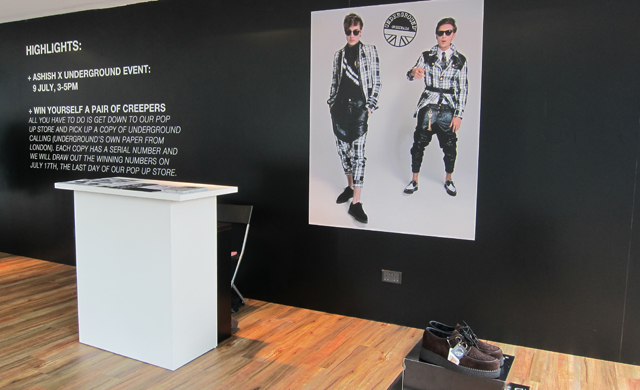 Through Jul 31. Glass House, Outside ION Orchard, 2 Orchard Turn.
Through Jul 31. Glass House, Outside ION Orchard, 2 Orchard Turn.
Special edition Underground boots from the UK are on sale here, paired with special theme music nights featuring emerging names like DJ Linda Hao and graffiti artist Eman Raharno.
Through Aug 7. POP UP Forum, #01-28/29 Forum The Shopping Mall, 583 Orchard Rd., 6304-3557.
Marni’s winter collection gets the pop-up treatment, featuring a luscious variety of bags, shoes, accessories and a full ready-to-wear collection with polka dots and tapestry prints set against a spacious layout—available exclusively at the store.
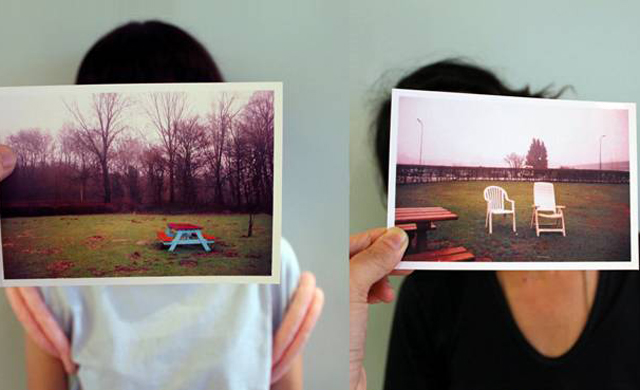 Jul 28-Sep 18. A Curious Teepee, #02-24 Scape, 2 Orchard Link, 6820-1680.
Jul 28-Sep 18. A Curious Teepee, #02-24 Scape, 2 Orchard Link, 6820-1680.
Local clothing brand See You Tomorrow and eyewear maverick Mystic Vintage present a collaborative pop-up store showcasing a mix of wares from both labels. Blurring the lines between an outdoor experience and an indoor setting, this “little picnic adventure” will feature limited editions specially curated for the store.
Through Oct 5. 2/F, Wrap Around @ Wisma Atria, 435 Orchard Rd.
The latest Resort collection by the novice local label will be selling at 30 percent discount in this intimate new space.
Sep. Details and location to be confirmed.
In conjunction with the F1 Grand Prix, sports lifestyle company PUMA will be rolling out a motorsport-themed pop-up store. Enthusiasts can get the latest from the PUMA Motorsport Collection and PUMA Ferrari inspired range.
Advertisement
When the going gets tough, the tough go pop-up. If you’ve been out and about recently, you’ll have noticed more and more pop-up concept stores and spaces sprouting all town over—we have retail (the latest being the Marni Autumn/Winter collection boutique at Forum The Shopping Mall and Al & Alicia at Wisma Atria), alcohol (the Asahi pop-up bar at three different locations on three consecutive Fridays), a ping pong bar (Camp Pong last June) and even ice-cream (the Magnum party launch at Meritus Mandarin), with quite a few more in the pipeline. There’s no questions that pop-ups are huge these days.
Gimmicky? Perhaps. After all, the pop-up concept is based on the idea of the highly elusive and temporary—they appear out of the blue in the most unexpected of places and disappear weeks (or in some cases, days or hours) later, creating a sense of exclusivity and intrigue. Some are even used as mini stores during the day and as a spot for small events or cocktail parties during the evenings, like Singtel’s three-story tri-stack bar stand during the F1 race last year.
“Pop-up does not simply refer to a ‘fad’, but to the fast and eco-friendly way of setting up shop,” says Sam Vedanaigam, founder and managing director of The Shelter Company, which specializes in the set-up and conceptualization of pop-up stores here, including that Singtel project. “This business model is great for testing out new products, launching new business concepts and hitting the market quickly and effectively. It is also a great way for retailers that don’t have a brick-and-mortar shop to create more awareness and attract more clientele.”
The city’s love affair with the pop-up concept can be traced back to 2004 when the first Comme des Garçons Guerilla Store opened in a nondescript shophouse in Chinatown, offering past season and limited edition fashion products and exclusive ready-to-wear collections for a limited period of just one year. The concept was such a huge success that it spawned numerous re-editions over the next three years, opening in unexpected venues and neighborhoods each time like Haji Lane and Redhill. More than anything else, it managed to tread the fine line between commercial and artistic viability, and has inspired numerous (welcome) copycats over the years. And while, cultural caché is clearly and important element, the opportunity to reach a captive audience is another.
See also: Charting Singapore's most interesting and influential pop-up moments
Jo Soh, founder and designer of successful local fashion label Hansel, who has initiated two pop-up concept stores here since 2009, testifies: “Pop-up stores allow you to test the market with less risk,” she says. “It also allows the designer to have first hand interaction with consumers so that you can get real feedback. Nothing beats a physical presence for people to notice a brand, especially in an unusual setting, so it’s also a PR and brand awareness generating machine.”
Jason Tong, founder of local indie eyewear label Mystic Vintage, who will be helming his first pop-up store at the end of the month in conjunction with lifestyle store A Curious Teepee and fashion label See You Tomorrow, agrees: “A pop-up store gives us little brands the opportunity to shine,” he says. “We have no capacity to have our own shop and participating in one gives us the space and focus. The exercise is very good for exposure through the shop’s channels and a good excuse for us to write to the media too. As a result of that, I’m sure more sales will follow.”
The pop-up concept is, then, seems to be the way to go for our modern economy: Surprising consumers with temporary “performances”—thus guaranteeing exclusivity—is just about perfect for the contemporary shopper with a short attention span and the need to be constantly engaged, exited and surprised. It’s a win-win proposition for both retailers/organizers and consumers. “Twenty or even 10 years ago pop-up shops wouldn’t have worked for smaller businesses as it was more expensive to advertise and took so much longer to get your message out,” says Andria Hutchins, who will set up the Revolution Pop Up store this weekend at a private residential unit near Orchard Road offering vintage and secondhand designer clothing at affordable prices. “Today, small operators on low budgets can now communicate to their potential markets at very low cost and within very short time frames. Those who are staging a short-term retail event can direct their messages to a precise target market for no or low cost in an instant. Who knows what will pop up next?”
PLUS: Three easy steps to your own pop-up space.
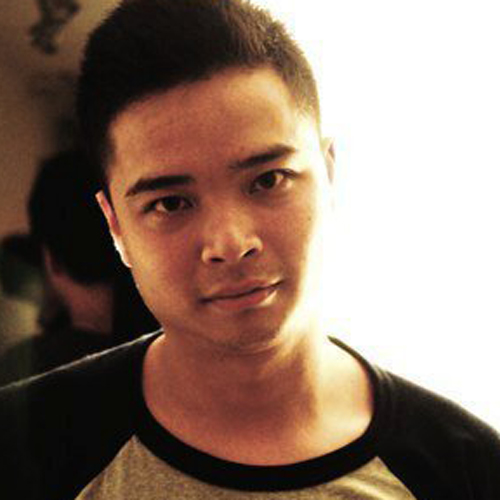
Gregory Yeap, 26
One selling babies or organs.

Karen Young, 35
One selling bras. What are you going to do, try them on there on the street? Or one with botox service and slimming wraps.

Charmaine Seah, 28
One for eyelash extensions and five-minute facelift services, or a pop-up KTV room.
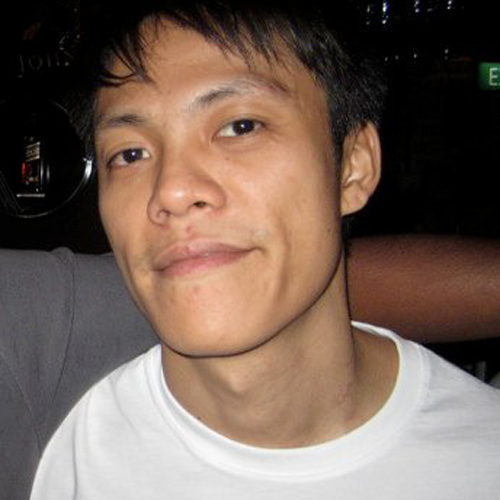
Derek Christopher, 28
Aren’t pop-ups like flea markets version 2.0? I think those selling facial or health products are ridiculous.
Advertisement
Quit making excuses about the heat. As low impact, high style modes of transportation go cycling’s hard to beat. Ditch the granny bike and take things up a gear.
Possibly the first “bike lodging” shop in Singapore, the centrally-located outlet houses two shower rooms and even a juice bar/lounge area. They also provide shampoo, shower gel and fresh towels so you don’t have to lug these things with you all the time. And you’re not the only one who gets to clean up either—every full month of lodging earns your bike a free servicing. The Bike Boutique also stocks bikes and accessories from some of the word’s top brands like Shimano and DMT.
At first glance, Life Cycle looks just like any other bike boutique—impressive-looking gear is lined up against one side of the store, with some propped up on wall racks. A display platform in front of the entrance also showcases some of their collector’s items, including a range of Alex Moulton bikes ($2,000-2,800), which are known widely as the Rolls Royce of bikes. But step further in and you’ll see a cozy gathering space where cycling enthusiasts from Bandung and Japan are known to meet up for a chat. At Life Cycle, you can also grab really cool accessories such as laptop carriers, leather saddle bags, a bike mount for your iPhone and even a torchlight with a built-in mp3 player ($128), as well as bike accessory labels including hipsters’ favorite Po Campo.
This new kid on the block, opened its Southeast Asian flagship store here in May. The minimalist nature of its bikes means you can easily match your outfits with your ride and there’s a nice array of accessories to make your commute more comfortable. We like the Bisou ($950)—which comes in a range of colors such as saffron, blue-grey and white—for its unique brown saddle, light wheels and upright handlebar, which allows for a more relaxed ride.
The customized and restored classic bicycles for sale in this gallery and workshop are truly impressive—a new arrival is the [HG] WELLS Velocommute bike, a three-speed collector’s item meticulously restored from a 1960s Raleigh Superb sport model. Featuring handmade leather grips, drum brakes and a set of matching hand pump and keys for front and rear locks, this head turner’s made for city roaming. Vanguard Design also stocks slick Brooks saddles, helmets from Danish label Yakkay, as well as other accessories by Cerchio Ghisallo.
Clubs and hangout joints for every kind of cyclist.
Joyriders
Apart from dedicated Saturday rides for beginners, there are weekday rides for the initiated.
Anza
One of the largest cycling clubs in Singapore, Anza organizes rides every day of the week, but on Saturdays, they meet at Thomson Road and go cruising through the city—everyone, experienced or not, is welcome.
Bikes & Bites
Probably the only place where you can relax with a coffee and check out exclusive brands such as Zullo and Storck at the same time.
Advertisement
This exhibition showcases the dazzling works of three of the best local art photographers—Sean Lee, John Clang and Zhao Renhui—who were the finalists for this prestigious photography award this year. Despite having very different styles and subject matters, they share a common desire to confront realities and push boundaries through their creativity. Through Jul 25. ARTSPACE@Helutrans, #02-04 Tanjong Pagar Distripark, 39 Keppel Rd., 6225-5448.
Who should go: If you are into the local visual arts scene, feast yourself on a buffet of sensory delights.
This exhibition showcases the works of photographers and authors, Alexandra Novosseloff and Frank Neisse, who explore the phenomenon of walls both as physical barriers and symbols of cultural and political tension in conflict sites around the world. Through Jul 27. Société Générale Private Banking Gallery, Alliance Française, 1 Sarkies Rd., 6737-8422.
Who should go: The politically inclined will have a field day dissecting the broad collection of walls in conflict areas like Tijuana, Belfast and Jerusalem.
An exhibition curated by veteran war photographers Horst Faas and Tim Page (who was depicted onscreen by the legendary Dennis Hopper in Apocalypse Now) serves as a memorial to 135 photojournalists who perished while covering the conflicts in Vietnam and Indochina from the 50s to 70s. It features over 300 poignant and evocative images, some of which were the very last frame that the photographers shot before dying. Through Aug 21. NAFA Galleries 1 & 2, 80 Bencoolen St., 6512-4043.
Who should go: History buffs will surely be captivated by the powerfully emotional stories painted by the images, especially since the Vietnam War is often considered the last conflict in which the media’s access was uncensored.
Advertisement
Singapore International Water Week took place earlier this month and that got us thinking about “the elixir of life.” After all, at a time when environmental concerns make the very idea of transporting water politically incorrect, do you really need expensive imported water? With Ice Mountain and Dasani acting as our everyday local controls, we decided to find out.
Acqua Panna, $1.95 (500 ml)
An abrasive, bitter water. As if you’re sipping just downstream from a dead sheep. Enough said.
Dasani, $0.50 (600ml)
Fairly ordinary, but with a fullness and no sharp flavors, which in this case is a good thing.
Evian, $1.20 (330 ml)
It’s heavy duty water this, and leaves a thin film on your tongue. At the risk of sounding pretentious, yes, you can absolutely taste the minerality.
*I-S PICK* Fiji, $1.65 (500 ml)
A thick, substantial water with a lush mouthfeel that’s nice and crisp. If we were stranded on a desert island, this is the one we’d be dreaming of.
Highland Spring, $1.20 (330ml)
Aside from being fairly ordinary, it has a sharp, astringent aftertaste that is simply horrible.
Ice Mountain $0.50 (500 ml)
A real plain Jane that’s bland and flavorless, with an end note that made us regret swallowing.
Purence, $2.05 (389ml)
Fresh and clean with an almost sugary finish. Overall, it’s quite a pleasant drink but it wouldn’t be the first thing we’d reach for.
Vittel, $1.30 (330 ml)
There’s a distinct powdery, almost chalky taste and texture. Plus a slightly sour aftertaste that assures it’s not getting our vote. Ever.
Volvic, $1.45 (500 ml)
Not overly mineral-ly, this is a well-rounded and structured sip that’s quite satisfying.
Eau de Perrier, $3.10 (750ml)
It has big bubbles that will smack you awake (despite the fact that they market it as “lightly sparkling”). There’s also the faintest hint of lemon.
Oldenlandia Water, $0.90 (270ml)
Truly revolting. Exceedingly salty with a distinct (and distinctly unpleasant) Chinese herbal taste. Forget about it.
*I-S PICK* San Pellegrino Terme, $1.95 (500ml)
It’s pleasantly sparkling and leaves some residual sweetness on the tongue. The fizz is just right and gives your mouth a tingle, in an entirely good way.
San Benedetto, $2.30 (1500ml)
If you like bubbles, this is a bit flat. We’re talking very, very minimal carbonation. There’s also a mild lemon-y tinge and not a hint of bitterness—delish.
Source Badoit, $5.35 (750ml)
Meh. Quite mild in terms of carbonation level and taste, we weren’t thoroughly impressed. Let’s just say that if this was a date, there wouldn’t be a second.
Voss, $4.90 (375 ml)
This pricey Norwegian import is fizzy H2O for wimps. The taste is fine, but there just aren’t enough bubbles (as if it’s been opened and left standing out).
Most, if not all, are available at major supermarkets but prices vary.
We got all but one of ours at Cold Storage Holland Village (#01-05, 233 Holland Village, 6468-5566).
Voss is sold at Jones the Grocer (#01‑12 Blk. 9 Dempsey Hill, Dempsey Rd., 6476‑1512).
Advertisement
What’s it like? A Thai fruit that is sour like a Thai lime but has the smell of an orange.
Tips: Use instead of lime in your favorite drink. Use just the juice or get all fancy and drop the whole lot in as the peel is edible.
We recommend: Bar Su’s newly launched cocktail, Goya, looks like a classic Mojito but the use of somjeed instead of lime gives it a new twist that goes with the brown sugar.
What’s it like? An aromatic root used a lot in local cooking that adds heat and spice.
Tips: Leave slices of ginger in your choice of vodka for 2 weeks. Can replace normal vodka in your cocktail or be had as a shot.
We recommend: Bamboo Bar at The Oriental Hotel uses this kind of fermented vodka to create their signature Ginger Cosmopolitan, that comes topped with slices of fresh ginger giving it a strong fragrance.
What’s it like? Thai herb used in traditional culinary adds aromatic scent.
Tips: Infused with vodka or simply muddle chopped pieces of a stick and put in your drink.
We recommend: Lycheegrass Collins at Soul Food Mahanakorn (56/10 Soi Thong Lor, 02-714-7708) lifts up your regular Tom Collins with lychee liquor and chopped lemongrass.
Advertisement
St. Regis Bar, 12/F St. Regis Hotel, 159 Rajadamri Rd., BTS Rajadamri. 02-207-7777. www.stregis.com Open daily from 12pm-1pm
Ingredients: Lemongrass, Thai basil, Thai chili, wasabi, fresh lime, coriander, tomato and vodka
What they say: St. Regis’ Thai interpretation of the Bloody Mary, the Siam Mary is inspired by flavors found in traditional Bangkok recipes. The spiciness of the chili and wasabi is nicely balanced by the sourness of the lime and tomato juice.
What we say: Cute presentation in a silver goblet, and despite the fact that it sounds like an indiscriminate mix of all things Thai, it’s better than expected. If you’re not into tomatoes or spicy food, this might be a bit scary though. But if you can dig the heat, this is a refreshing drink, rich in texture and with a nice lemongrass aroma.
Price: B290
Sky Bar, Le Bua Hotels & Resorts, State Tower 1055 Silom Rd, 02-624-9999 www.lebua.com Open daily from 6pm-1am
Ingredients: Whiskey, sweet vermouth, green tea liquor, fresh green apple juice and rosemary-infused honey
What they say: Created in honor of the filming of The Hangover II at Le Bua, the Hangovertini was allegedly made for the production team at the end of long days on set.
What we say: If you’re not into whiskey, fear not. The taste and smell are masked by the apple juice and rosemary-infused honey. Three spirits in one martini might seem hardcore, but you wouldn’t know it from the taste, which is refreshing and kinda does feel like a boost to your energy levels. The green tea liquor is unusual and adds to the complexity.
Price: B400
Bar Su, G/F Sheraton Grande Sukhumvit, 250 Sukhumvit Rd., BTS Asoke. 02-649-8888. www.sheratongrandesukhumvit.com/ Open daily from 7:30pm-2am
Ingredients: Vodka infused with lemongrass, chili, galangal and kaffir lime leaves, fresh lime juice and boiled shrimp
What they say: With the aim of creating a truly Thai cocktail, the folks at Bar Su take their inspiration from another symbol of Thainess: tom yam kung. The lemongrass, chili, kaffir lime leaves and galangal are infused with the vodka for two weeks before being mixed with the other ingredients.
What we say: This cocktail is like eating your favorite soup, but cold and boozey. Thumbs up for the boiled shrimp—it’s nice and fresh and doesn’t make the whole thing fishy. Careful if you don’t do spicy. This heat from this cocktail lingers in the throat. If you’re really into spicy food, though, try the vodka as a shot.
Price: B400
Bamboo Bar, The Oriental Hotel, 48 Charoenkrung Soi 40. Open daily from 11am-2am. 02-659-9000 www.mandarinoriental.com
Ingredients: Mekhong whiskey, brown sugar, fresh lemongrass, mint leaves, fresh lime, fresh ginger, lime juice and sugar syrup
What they say: This is the bar’s signature drink, created more than 50 years ago by the former bartender with the recipe handed down from generation to generation.
What we say: Refreshing and easy drinking, thanks to the mint leaves and fresh lime juice. This is very similar to the classic Mojito, except for the distinct taste of Mekhong which eclipses the lemongrass a bit.
Price: B300
Available at hotels and resorts in key tourist destinations around Thailand
Ingredients: Vodka, coconut liqueur, syrup, Thai chili, young ginger, kaffir lime leaf, lemongrass, lime juice and soda water
What they say: Invented by Surasakdi Pantaisong, the winner of 2008 Bartender Championship hosted by the Tourism Authority of Thailand and Thai Hotel Association, this drink is a marketing campaign to create Thailand’s equivalent of the Singapore Sling.
What we say: Aromatic, easy-drinking and not too potent. The soda water gives it a pleasant lightness.
Price: B250-400
Advertisement
Perhaps it’s just the Singaporean fondness for acronyms, but there’s no denying the astounding rise in popularity of MMA (mixed martial arts). It’s a worldwide trend, of course, but in the last 12 months, the sport (or rather, amalgam of other sports) has wrestled our city’s fitness scene to the floor and now holds it at submission point.
“MMA is the fastest growing sport in the world,” reveals Chatri Sityodtong, founder of Evolve MMA. “It has grown more than 10 times in the last eight years and Singapore is now witnessing similar numbers. We’re also going to be holding one of the world’s biggest MMA events, the ONE Fighting Championship, soon, which will be viewed across 25 countries by more than 500 million viewers. That’s major.”
MMA is not just a martial art form—it’s an integration of the best fight styles out there, including Brazilian Jiu-Jitsu, Muay Thai, wrestling and boxing, which is why it has such a lethal reputation. But we’re in Asia, a region that’s also well-versed in other forms of self-defense like silat and taekwondo. Are these more traditional fight styles suffering as a result?
“MMA is definitely growing faster than traditional martial arts. In fact, MMA is stealing market share from them. This is probably because it’s been proven recently in the UFC that 99% of the traditional martial arts do not work in real life. The ones that have risen to the top are Muay Thai, BJJ, boxing and wrestling, and these four disciplines are the foundation to MMA today,” Sityodtong explains.
But the big bosses of silat and taekwondo aren’t too worried.
“Yes, we’re definitely seeing fewer adults at our classes these days but I feel it’s only because MMA engages in much more vigorous advertising and marketing,” says Lee Pei-Fen, instructor at the Hyun Taekwondo Academy.
“MMA is a different experience altogether from silat.,” says Imran Abdul Rahman, founder of the Sports Silat Academy and SEA Games World Champion. “It began getting hyped up when people started watching UFC and movies like Pray the Devil Back to Hell—people are just attracted to the danger element. Silat however, teaches not just effective defense moves; it also teaches patience and self-control. And it’s very safe. This is why parents send their children for us to teach, which means silat will continue to enjoy a healthy share of the market.”
Whether MMA can continue to grow at the same rate remains to be seen. Right now, anyone thinking of picking up a martial art for the first time is unlikely to look anywhere else. But perhaps there really is still room for the rest. If an MMA backlash seems unlikely, it’s certainly true that these individual disciplines offer more than just ripped abs and lethal moves. Here, we take a look at five very different fight styles and where you can pick them up.
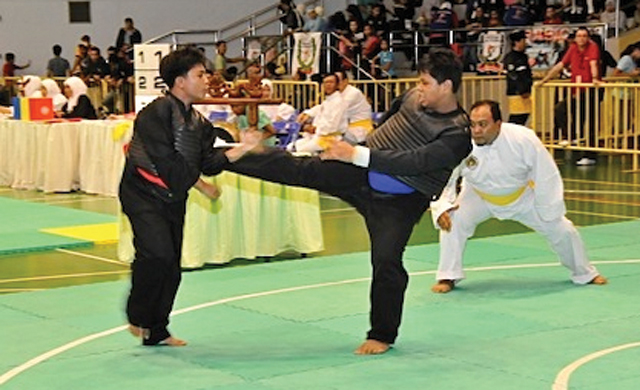 Go for: Silat. Legend has it that this Indonesian art of fighting and self-defense was developed by a female warrior who imitated the movements of a tiger and a large bird fighting with each other. Using heavily measured moves that usually involve a flick of a wrist and nimble footwork, silat can seem to the uninitiated like a slow dance of sorts, and is connected to countless Malay myths involving supernatural strength.
Go for: Silat. Legend has it that this Indonesian art of fighting and self-defense was developed by a female warrior who imitated the movements of a tiger and a large bird fighting with each other. Using heavily measured moves that usually involve a flick of a wrist and nimble footwork, silat can seem to the uninitiated like a slow dance of sorts, and is connected to countless Malay myths involving supernatural strength.
The class: Unlike other martial arts classes, silat is rarely offered on a class-by-class basis. “If you’re serious about martial arts, especially silat, you have to commit to a lifetime of learning. You don’t sign up for two weeks and stop,” says Imran, who conducts training programs alongside partner and fellow SEA Games champion Abdul Kadir. Discipline and patience are the keywords here. You won’t get much of an adrenaline rush in a beginner’s class—you’ll need to first master the basic stance, punch, kick and takedown. There are no shortcuts to this—you do it over and over until you get it right or you don’t advance to the next level. As you move forward, you’ll also learn basic artistic movements—silat’s one of the most graceful art forms in the world, and decepively lethal. As for the look? Traditional robes are provided and you’ll be practicing sans shoes.
Where to go: Sports Silat Academy, Tampines SAFRA, 1 Tampines St. 92, 6297-5659, www.silatacademy.com. Contrary to popular belief, silat training venues aren’t always dingy school halls. The Sports Silat Academy offers comprehensive venues for professional training, complete with full floor pads for safety. They’ve also opened two new outlets, one of which is at Republic Polytechnic.
How much: $42.80 per month for all programmes, with classes held once a week.
 Go for: Taekwondo. The Korean martial art uses a system of open-handed strikes, blocks and ubiquitous kicks and punches to maneuver takedowns, joint locks and throws. Sometimes, it also incorporates the theory of pressure points.
Go for: Taekwondo. The Korean martial art uses a system of open-handed strikes, blocks and ubiquitous kicks and punches to maneuver takedowns, joint locks and throws. Sometimes, it also incorporates the theory of pressure points.
The class: It begins with students and the instructor greeting each other with a low bow symbolizing respect, followed by a series of ankle rotations, hip-loosening exercises and basic leg stretches to warm you up. You might want to pick your partner wisely—the next bit of the class involves alternating between holding the target pad and shoving your foot in someone’s face. After what seems like an eternity of panting through front and back thrust kicks with the instructor screaming, “Kick faster!” every few seconds, you’ll be introduced to a variety of jumps and kicks. Expect the class will conclude with some core strengthening exercises and stretches to cool you down, after which even walking home will be beyond you!
Where to go: Hyun Taekwondo Academy (pictured above), #03-00, 138 Prinsep St., 6336-1455, www.hyun-tkd.com.sg. You can’t miss the place. A blown-up figure of a man in a jump-kick pose marks the building, and there are posters of the Korean flag and the Korean Taekwondo Federation crest put up in front of the training hall on the third floor to mark your destination.
How much: $150 per month, excluding $90 for registration and uniform fees.
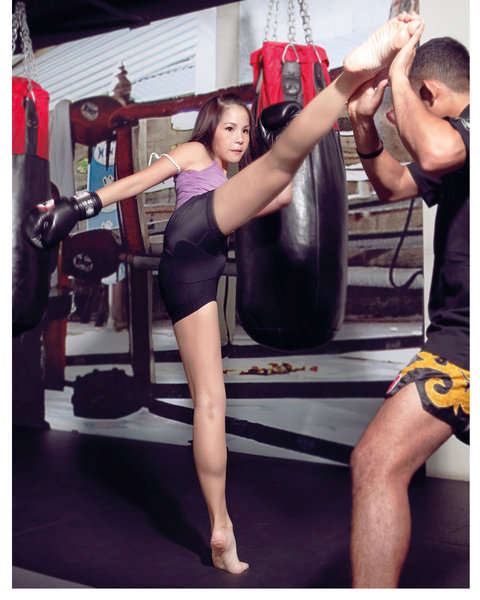 You think winning is everything
You think winning is everythingGo for: Muay Thai. A combat sport from Thailand, Muay Thai is sometimes known as the “Art of Eight Limbs” because of its use of everything, from the elbows to the knees, as weapons. It’s kickboxing inspired by ancient Thai folklore.
The class: Muay Thai is not for the faint-hearted. On I-S’ most recent visit, we had the privilege of watching World Champions Namsaknoi Yudthagarngamtorn and Yoddecha Sityodtong engage in a friendly striking match as a sneak preview and very nearly tried to sneak away unnoticed. When done right, a typical punch and kick routine against the target pads results in a series of whistling swishes, hair-raising smacks and low, menacing grunts—pretty intimidating stuff. After encasing your hands in huge boxing gloves, you’ll be taught the neutral stance, how to maneuver forward, side punches and how to kick properly (“Don’t kick with your toes!”). Once you’ve got those down, you’ll work your way through more challenging routines, during which everything, from the way you swing to the amount of weight you put on the balls on your feet, is scrutinized and corrected. Get everything right and you’ll soon be HUA!-ing your way to ultimate stress relief.
Where to go: Evolve MMA, #01-01 Far East Square, 26 China St., 6536-4525, www.evolve-mma.com. This academy offers a comprehensive range of classes, with most of their instructors being World Champions from established “fight clubs” all over the world, such as the legendary Sityodtong Gym in Thailand.
How much: To attend a complimentary trial class, call 6536-4525. A comprehensive membership plan will give you unlimited access to all classes including Muay Thai, in preparation for your MMA training.
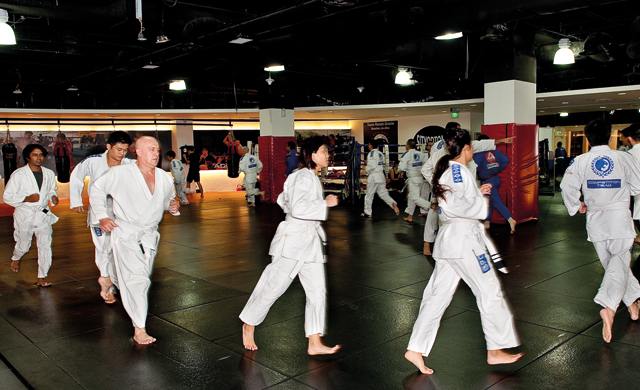 Go for: Brazilian Jiu-jitsu(BJJ). If height and speed are your main weaknesses, BJJ might just be the best combat style for you. Derived from an early 20th century Japanese martial art form, BJJ involves a lot of grappling and wrestling on the ground.
Go for: Brazilian Jiu-jitsu(BJJ). If height and speed are your main weaknesses, BJJ might just be the best combat style for you. Derived from an early 20th century Japanese martial art form, BJJ involves a lot of grappling and wrestling on the ground.
The class: The beauty of this fight style is that you don’t really need much effort—you just need to know which part of your opponent’s body to grab and twist into painful oblivion. The first thing you’ll learn is how to effortlessly drop your opponent. Once that’s settled, you’ll pick up techniques on how to block someone’s advances to your chest and limbs, and turn their position to your advantage, which when done well can result in a broken arm or neck (theirs, of course). Naturally, it doesn’t always have to be quite so violent. Even with the gloves on (so to speak), it’s a fantastic workout.
Where to go: BXG Boxing & Fitness, 324 Tanjong Katong Rd., 6348-8380, www.bxgfitness.com. Kreation Jiu-Jitsu, a grappling and MMA group based in Singapore, holds weekly classes here.
How much: $80 per month for classes once a week or $100 per month for unlimited sessions. Each class lasts an hour. There’s also a one-time $35 registration fee.
Go for: Krav Maga. Initially created as a way to help Jewish communities defend themselves against the Nazis, Krav Maga is technically not a sport, and there are no competitions. Instead, the training is designed to get straight to the point of self defense, teaching you to utilize your own strength and surroundings to inflict maximum damage. Its growing popularity among young women is no accident—groin strikes and headbutts are integral parts of the training. Expect bruises.
The class: A typical class begins with zombie drills, where you take turns to be surrounded by “attackers.” As you attempt to block their physical contact, you’re introduced to the groundwork of the discipline as you build up situational awareness, hand-eye co-ordination and footwork, and become accustomed to the general sense of urgency. Once that gets your blood pumping, the instructor will demonstrate and explain individual techniques, breaking them down stage by stage until you’re able to copy them with “dry drilling.” Chief instructor Sascha Soliano stresses the importance of the three Rs: Rehearsal, rehearsal, rehearsal, until you build up your muscle memory. Only then can you graduate to the “aggressive attacks,” using full safety gear to practice your responses to violent confrontation. Emphasis is placed on creating realistic simulations, so that when the real thing happens you’ve built up enough mental strength to avoid panicking. Once you've reached both physical and emotional exhaustion, a cool down at the end of class involves discussing your mental state and confidence, with a debriefing and run-through of probable scenarios designed to make you feel more prepared for whatever life throws at you.
Where: Krav Maga Singapore, #03-00 Hui Seng Building, 38 Carpenter St., 9475-9012, www.kravmaga.com.sg. There aren’t many places specializing in Krav Maga but this one stands out because it is helmed by Sascha Soliano, who served in the Singaporean HQ Commando Special Operations Force (SOTF).
How much: A single hour-long trial class costs $25 while monthly rates range from $160-350.
Watch Asia's Biggest MMA Event Here In Singapore
 Evon Tan, Fashion designer, 25
Evon Tan, Fashion designer, 25
My precious clothes! Unappreciative people strut into my store and start tugging at them. They just don’t understand the importance of designer clothes! How dare they!

Gene Khor, Writer, 31
Democrahahahahaha! Sorry, couldn't say that with a straight face.

Wayne Ree, Writer, 29
My right to paaaaaarty. (Had to be said.)
 Zea, Webmaster, 28
Zea, Webmaster, 28
I once fought hard to get back the 45 cents that a vending machine swallowed, and got a nice cup of mocha instead of the tomato soup I originally wanted dispensed. I demand for what’s right and will never give in to any big corporation that tries to take my dollars and cents.
Advertisement
There are days when a mere massage won’t cut it. You know, those times when you’re feeling so run-down and short on inspiration that you just want to spend the day being pampered. (That’s you too, fellas. Even if you’d never admit it.) Next time that feeling strikes, head straight to an all-in-one healing spa. They’ll look after you better than even your mother could.
Opened earlier this year, Verita is a wellness haven that truly goes the whole nine yards. Here, you can customize a program to help you achieve your personal health goals, like reducing fatigue, weight loss, boosting your immunity and digestive tolerance levels and managing stress. You can treat pretty much every aspect of your wellness using Verita’s natural healing therapies, most of which also encourage relaxation. If you’ve got respiratory and skin conditions like asthma, bronchitis, sinus and eczema, you can opt for halotherapy, a salt air exposure therapy thats popular in Eastern Europe ($60, for 60 minutes). There are two man-made salt caves here, covered in Dead Sea salt to maintain a highly anti-bacterial environment. During the session, all you need to do is sit in the cave while pure sodium chloride is dispersed into the air using a nebulizer. Once inhaled, the salt particles are said to help clear the respiratory tract and break down mucus. They also allegedly help to repair skin and stimulate skin tissue growth. For some intense stress relief, try their flotation tank therapy ($80 for 60 minutes), which involves floating on the surface of water highly saturated in Epsom salt in a chamber that’s been removed of all stimuli (sights, sounds, temperature and even gravity). You’ll float almost immediately as the solution is 10 times more buoyant than sea water, and you’ll be exposed to 15 minutes of music followed by 45 minutes of silence, to allow your body to enter a peaceful and meditative state.
308 Phoenix Park, 6737-2377.
The Balinese are known for their traditional healing methods, one of the reasons why some say a trip to Bali can haunt you for the rest of your life. If you want to relive the elaborate long strokes of a traditional Balinese massage, Wayan is the place to go. There is the Rural Kampung Urut ($68 for 60 minutes) here, using fresh ground ginger and onion, as well as the Balinese Boreh ($38 for 30 minutes), a scrub that uses a jamu-based (Traditional herbal or organic medicine) mask made of spices like pepper, nutmeg and cloves. You can also try their Javanese Lulur ($38 for 30 minutes,) a full body scrub filled with the scents of turmeric and other essential spices. If you’re so inclined, another must-try is the Wayan Kempis Perut ($138 for 60 minutes), an award-winning tummy trimming treatment that includes a slimming massage and a couple of minutes bound in a Balinese wrap cloth while you undergo a relaxing face massage.
61 Bussorah St., 6392-0035.
Ayurveda (Traditional Hindu system of healing that focuses on diet, herbal medicines and yogic breathing) has been practiced in ancient India for centuries to help relieve bodily aches and pains. Ayurlly’s one of the more informed ayurvedic spas here, with energizing treatments using herbal oils, blended powders and even medicated food. For instance, if you’re suffering from sports-induced pains, you might want to try their Navarakizhi ($110 for 60 minutes), where hot medicated rice pudding in cloth bags are applied throughout the body to supposedly help level your physical consistency and nerves, and calm your throbbing muscles. Guests suffering from conditions affecting the head such as insomnia, headaches and even facial paralysis can try the Shiro Vasti ($108 for 45 minutes), where a proprietary blend of oil is held over the head with a special leather cap. There are also treatments for stiffness in the neck and fingers, as well as arthritis.
#05-11/13 The Verge, 2 Serangoon Rd., 6737-5657.
There are quite a few “outdoor spas” in town—we’re not called the Garden City for nothing. But one that stands out is this award-winning hotspot for relaxation that not only encourages the use of nature in its treatments, it also encourages the raw food diet, exercise (there’s a Pilates studio here) and customized holidays (we like!) as part of the healing process. Complimenting their botanical theme, the spa uses only natural, herb-based products in their treatments, which include the oxygenating Swedish Recharge ($98-138), the stimulating Thermal Earth hot stones massage ($158) and specialized massages concentrating on tension-relieving, acupressure (Chinese treatment of symptoms by applying finger pressure to specific pressure points on the body) methods as well as quick and focused anti-stress rubs. Start afresh with their detox therapy package ($98), which includes exfoliation with ginger cream, a therapeutic ginger rub and a firming and contouring abdomen massage. There’s even a detox ear candling option ($58), accompanied by manual lymphatic drainage on the face and neck. We’re also fans of their Australian eatery Canopy and The Green Room Café, which offers vegetarian cuisine. Signature dishes include gado gado and baked mushroom brown rice—perfect accompaniment to the treatments here.
Bishan Park II, 1382 Ang Mo Kio Ave. 1, 6456-6556.
Advertisement